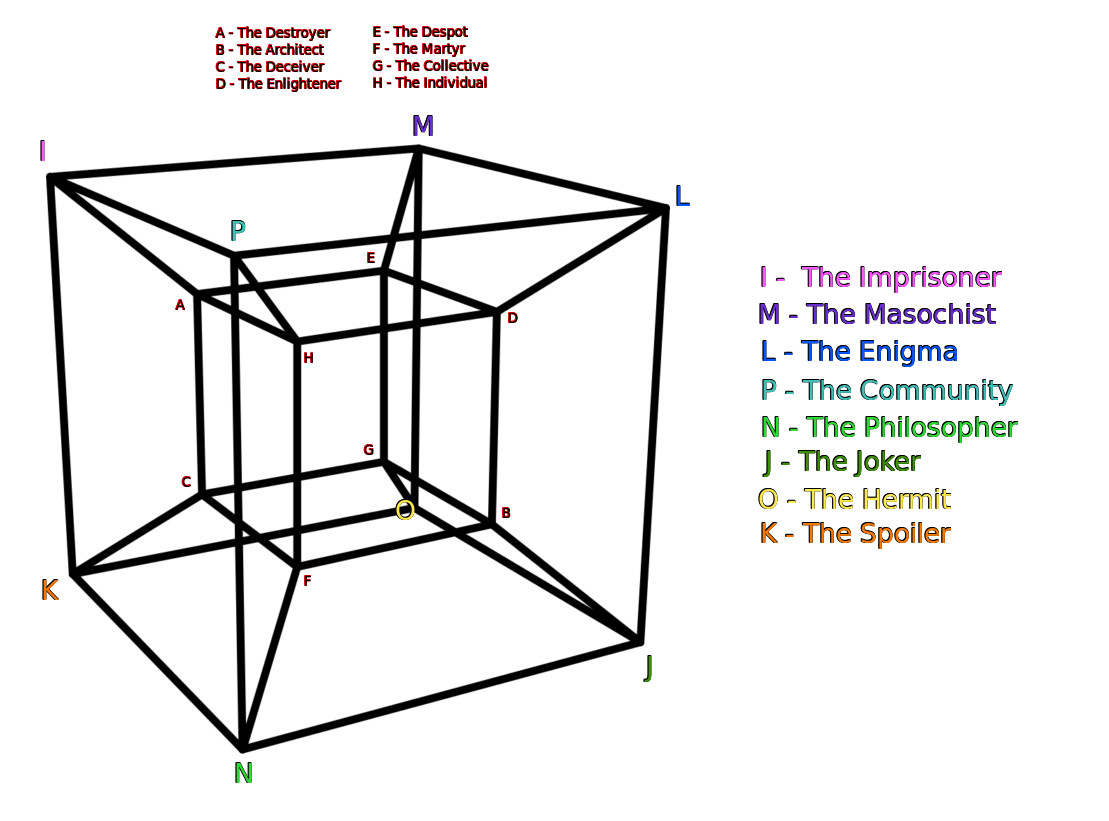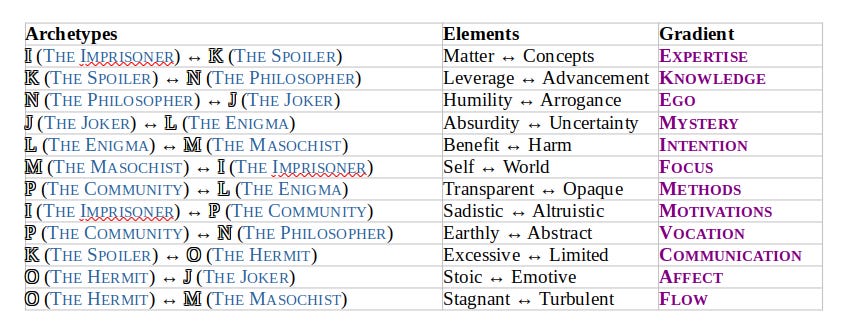9th Density: The Tesseract
It isn't really a tesseract, but it probably is from the 9th Density.
Today I would like to share with you a very special project that I have been working on. It is, as you will rapidly ascertain, the extension of my last very special project, which was the Sixth Density Integrity Cube. The Sixth Density Integrity Cube was extremely speculative, and quite obscure. This project is even more obscure, and far, far more speculative, so I don’t expect it to resonate with many people; if it proves interesting to only one other person, however, it was worth the efforts.
In this article, I’m going to elucidate somewhat the process by which I arrived at this massive conceptual beast, because I am not honestly sure how to even begin to write about it otherwise. It began with the concept of the shape itself, which was, I quickly realized, a tesseract. I later discovered, during the course of my musing scribbles, that the shape need not actually be a tesseract by the technical definition – a tesseract is a cube with cubes for faces, and there is no real reason why our vertices here must form cubes – but the tesseract shape was nevertheless my starting point. After printing out an image – which I have made use of to form the below diagram; I did not make the original tesseract drawing here – I scribbled notes on it until I arrived at what I’m going to share below. It’s far too busy to write every concept on the diagram itself, but stripped down to its component parts, it looks something like this:
… But that is merely the beginning. This particular theosophical musing warranted tables.
Each of the Archetypes that make up the points of the original (6D Integrity) cube are extended to their obverse beyond the outer corner point of the cube, forming a complex multidimensional structure (“cube within a cube”) that resembles a 2D or 3D rendering of the hypothetical 4D structure known as a tesseract. Although our structure is not a tesseract by the strictest definition, we refer to the shape depicted here as “the tesseract” for the sake of simplicity.
An obverse, as the word is used here, is defined as that which is the opposite form in concept, yet parallel in intention. This is best understood by giving a couple of examples. The first obverse listed here is the obverse extension of The Destroyer, which is the Archetype known as The Imprisoner. We arrive at this Archetype by imagining the opposite concept to that of destruction – which is order – and then taking it to its harmful extreme. What is the harmful extreme of destruction? One might imagine it to be an order so unyielding that it becomes a prison – thus, the Archetype that is obverse of The Destroyer is he who restricts Freedom, who we will call The Imprisoner.
A positive example of the obverse of an original Archetype is the extension of The Enlightener. The Enlightener is one who offers benefit through the sharing of facts. However, there may be times when full disclosure of facts could be harmful, and in these cases, it is necessary to conceal information. The Archetype of The Enigma is one who is adept at obscuring facts.
Below are listed the original eight Archetypes of Sixth Density and their corresponding eight obverse Archetypes of the 9th Density (the 18th Dimension).
Each of the eight Archetypes of the 9th Density has three concepts or properties that are associated with it. These are inherent properties are known as the Elements of the Archetype itself. Finding them is also a necessary step towards finding the Gradients of Character that make up the vertices of the tesseract. Please note that the form of the word denotes whether it is a concept or property, and thus is an important aspect of the word itself.
There are 24 unique Elements of the the 9th Density Archetypes. They are as follows:
There are 12 Gradients of Character that make up the outer perimeter of the tesseract. These are found by connecting each of the points that denote the eight 9D Archetypes, which extend beyond the original 6D cube. These points, when connected, form 12 vertices.
The subject of each Gradient may be arrived at – with some degree of difficulty – by first determining the similarity between each connected Archetype. This gives us one of each Archetype’s Elements, which are listed above. The subject of the Gradient may then be ascertained by comparing the relationship between the two Elements, and determining what connects them.
Take, for example, the Archetypes of The Masochist (M) and The Enigma (L). The Masochist is one who brings self to harm. The Enigma is one who benefits others through uncertainty. One causes harm, while the other brings benefit. Their connection, therefore, could be said to be in their Intention. Thus, the subject of the Gradient of Character that connects the two is Intention.
A second example is that of the Gradient between The Hermit and The Masochist. The Archetype of The Hermit is that he is one who resists others – regardless of motivation or intention, unlike The Masochist, whose Intention is always harmful. While the gregarious may view a Hermit’s choice to self-isolate as being harmful to self, it is not necessarily so if the Other selves around a Hermit are dangerous to the Hermit’s well-being. However, we can be relatively confident that, regardless of a Hermit’s motivation to isolate himself, he is in at least some way stagnant – this is an intrinsic property of one who is considered a Hermit. The Masochist, on the other hand, has a turbulent inner life. The connection here is the concept of Flow, and this, therefore, forms the subject of that vertex.
The precise nature of each Gradient varies. For example, the Gradient of Character that connects the Imprisoner and The Spoiler pertains to each Archetype’s Expertise. However, the Gradient that connects The Spoiler and The Philosopher – that is, Knowledge – connects each Archetype’s use of that concept.
The subjects of the 12 Gradients of Character are as follows:
This is as far as I get so far.
What does all of this mean? Where does it lead? … I’m not sure. I do have it in my head that I might attempt to make a novel Tarot deck out of it, but that’s about as far as I get. Perhaps it will be useful to someone; perhaps not. I do hope that it might be.
You may be wondering, lastly, why I am calling these 9th Density concepts, as well as why I have chosen to designate them as belonging to the 18th Dimension. That, my friend, is going to have to be a topic for another day. Turns out that, in the course of trying to explain it, I’ve uncovered a far bigger topic than I originally thought.
In the meantime, I invite and welcome any and all questions, comments and criticism. This is as yet a work in progress, as I continue to uncover new truths about this way of thinking, as well as working to refine my presentation of this concept map to the 3D world.






Too confusing - too black and white. Interesting how it came to you - I'm sure it's very relevant to you, but I can't seem to tap into it as easily as Michael (for example).